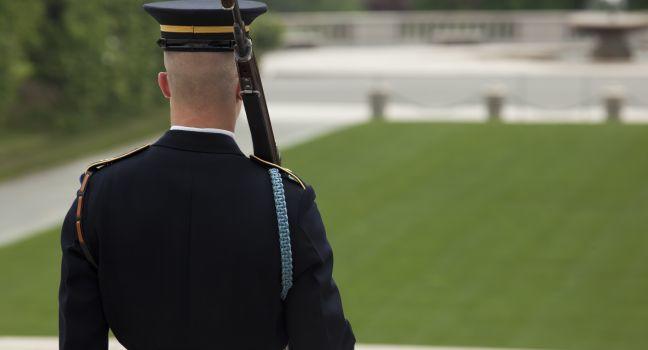Arlington National Cemetery

More than 400,000 Americans who died during wartime, as well as many notable Americans (among them Presidents William Howard Taft and John F. Kennedy, General John Pershing, and Supreme Court Justice Ruth Bader Ginsberg), are interred in these 639 acres across the Potomac River from Washington, established as the nation’s cemetery in 1864. Prior to 1857, the land was a plantation owned by George Washington Parke Custis, grandson of Martha Washington. Enslaved people built Arlington House, which became the country’s first memorial to Custis’s step-grandfather, George Washington; the house and plantation were later passed down to Custis’s daughter, Mary Anna Custis Lee, the wife of Confederate general Robert E. Lee. Arlington was very much a typical working plantation before it was a cemetery, with 196 enslaved individuals living and working on the property when the Lees inherited it. Beginning in May 1864, the former plantation, which had been seized by the U.S. Army in 1861, became a military cemetery.
Today Arlington is the most famous national cemetery in the country, with an average of 27 to 30 funerals held every weekday and another six to eight funerals on Saturday for people who did not require or request military honors. You can visit dozens of notable grave sites, monuments, and even an arboretum. Sections 27 and 23, two of the oldest parts of the cemetery, are a particular must for modern-day visitors. Fifteen-hundred African American soldiers who fought in the Civil War and the ensuing Indian Wars are buried here, as are over 3,800 nonmilitary African Americans (including many who were formerly enslaved); they are buried in graves marked only as “citizen” or “civilian.”
Tour-bus services are provided for a fee every 30 minutes (buy tickets in the Welcome Center or at www.arlingtontours.com). Wheelchairs and strollers are not allowed; handicap-accessible vehicles are available upon request. For a map of the cemetery or help finding a grave, download the cemetery’s app, ANC Explorer, or use the computers at the Welcome Center.



